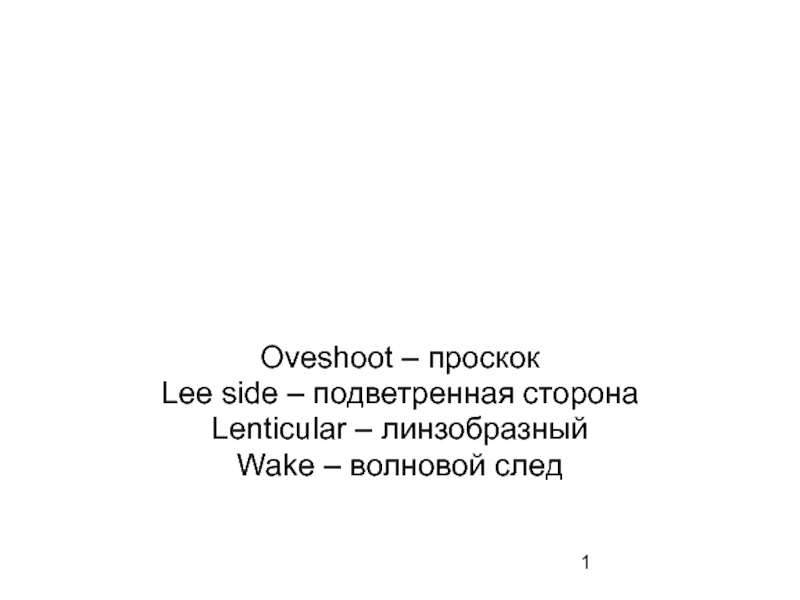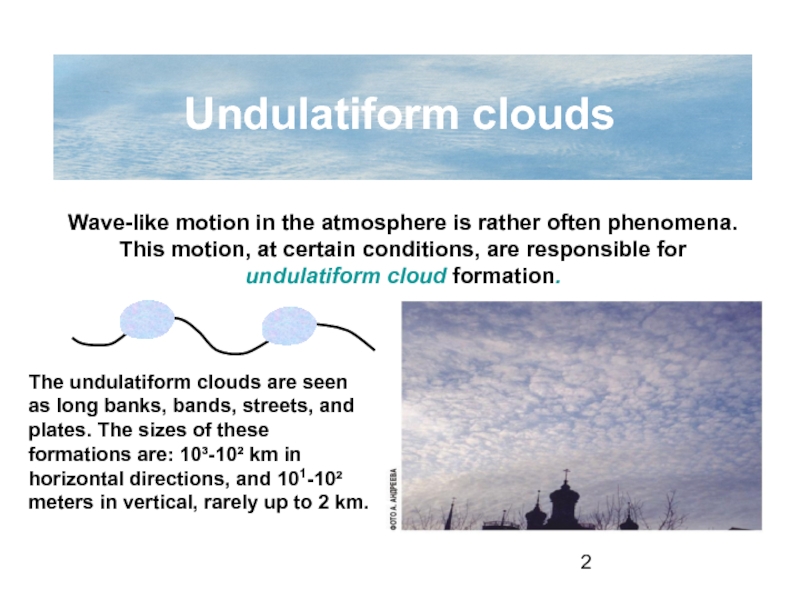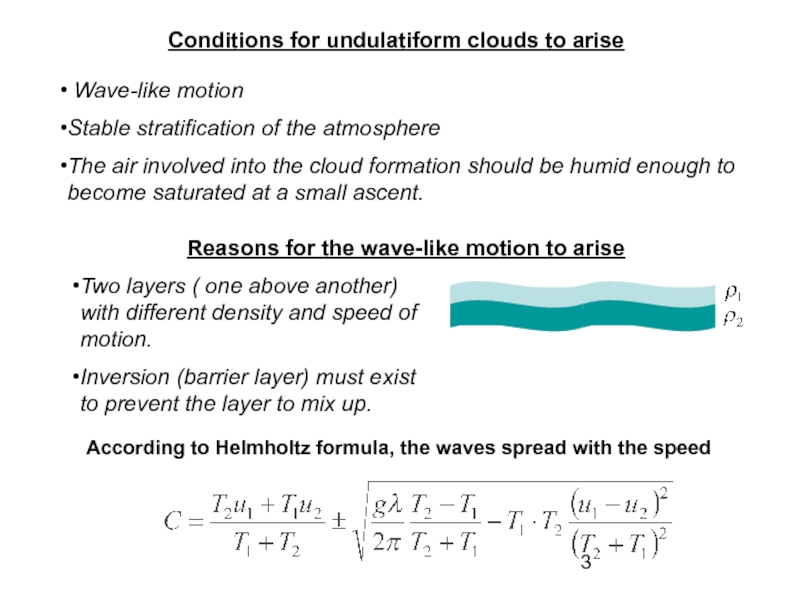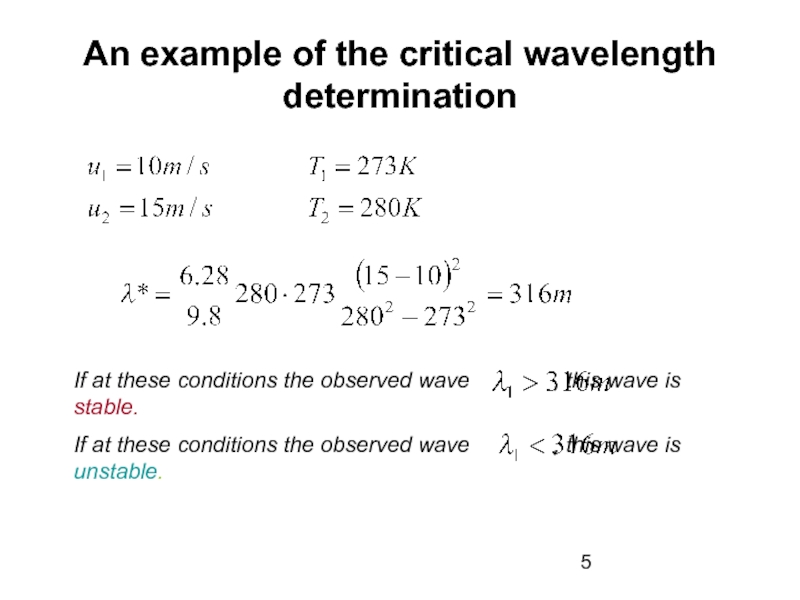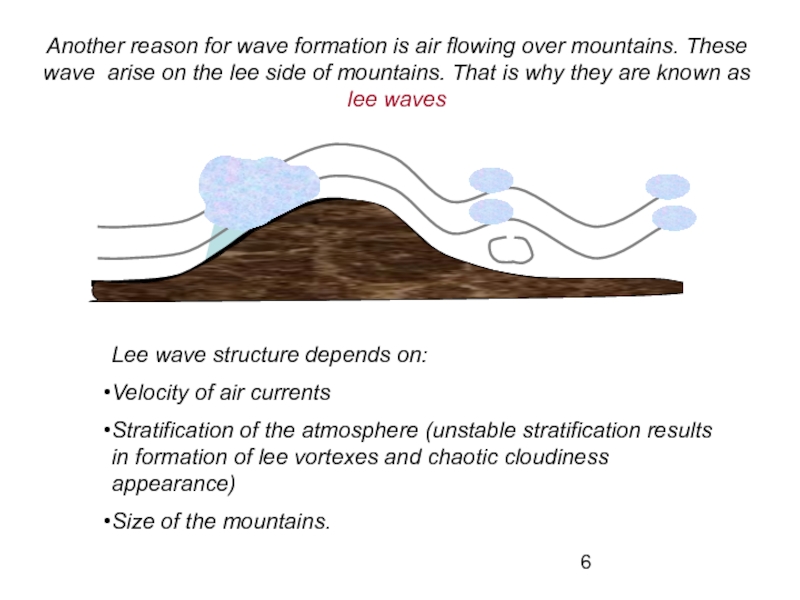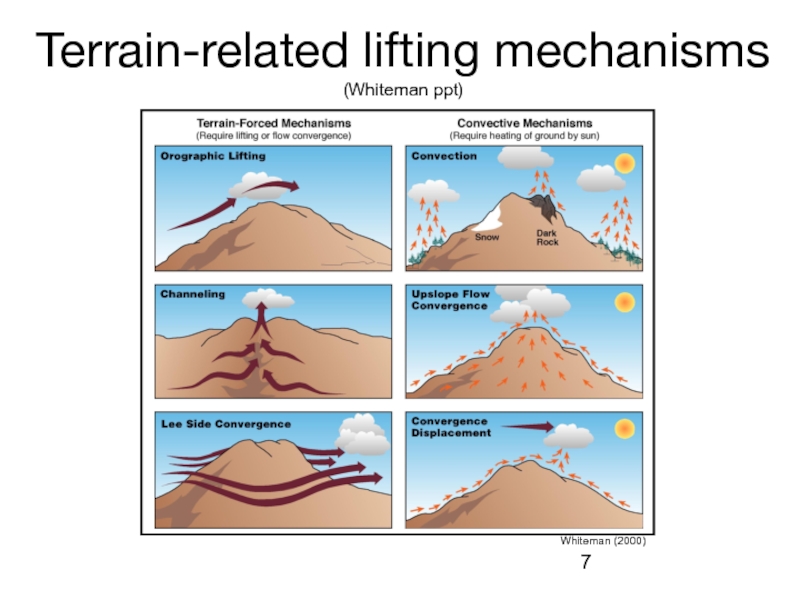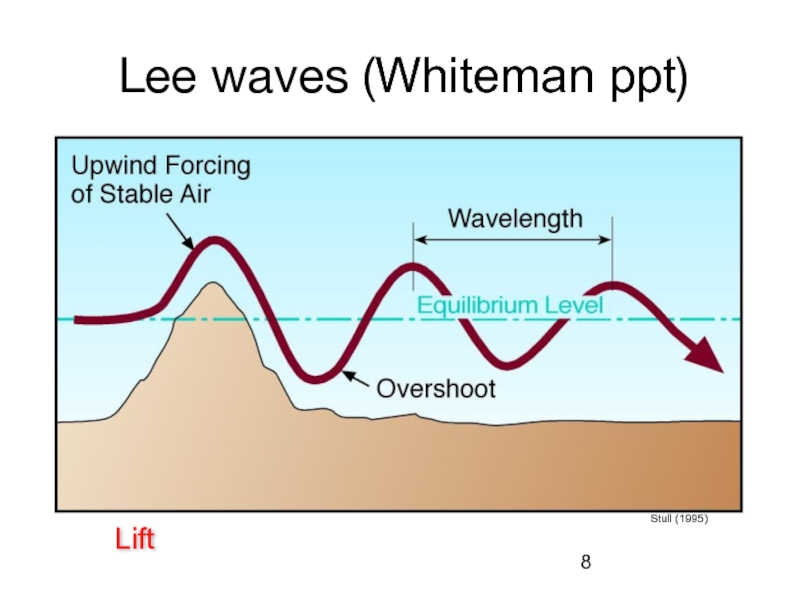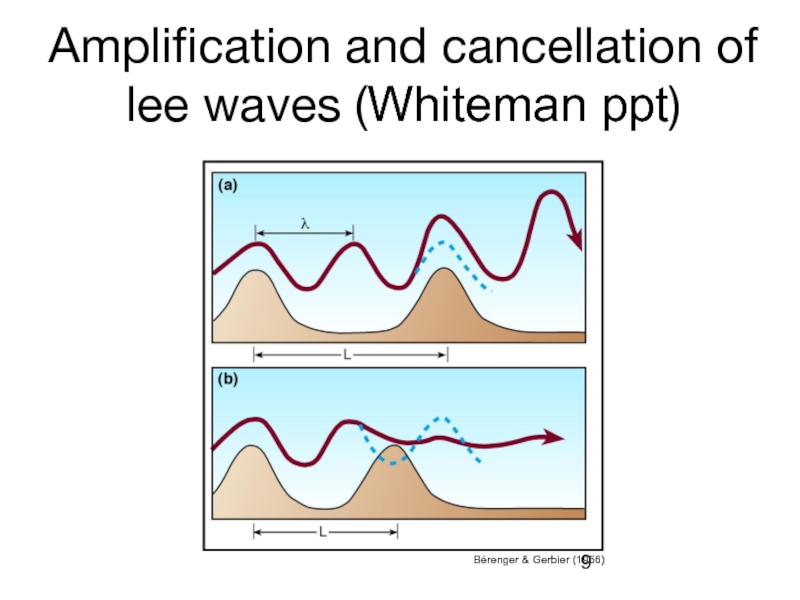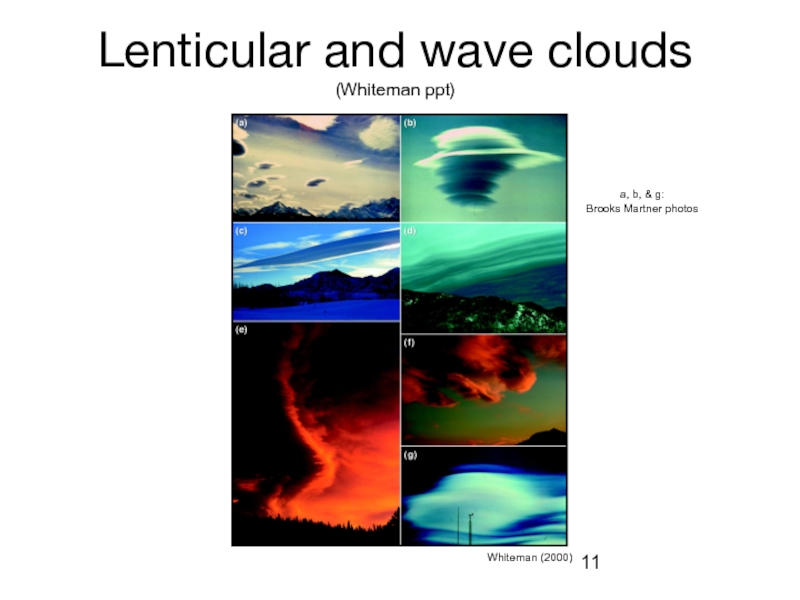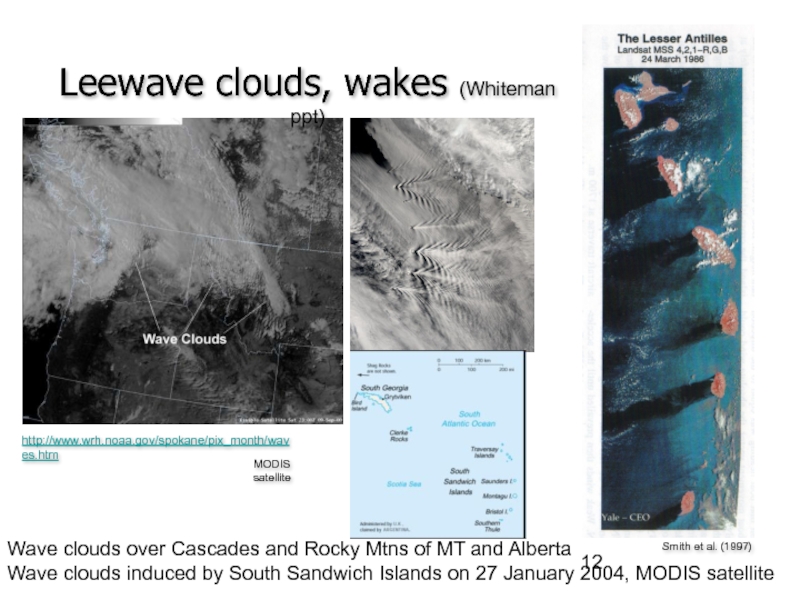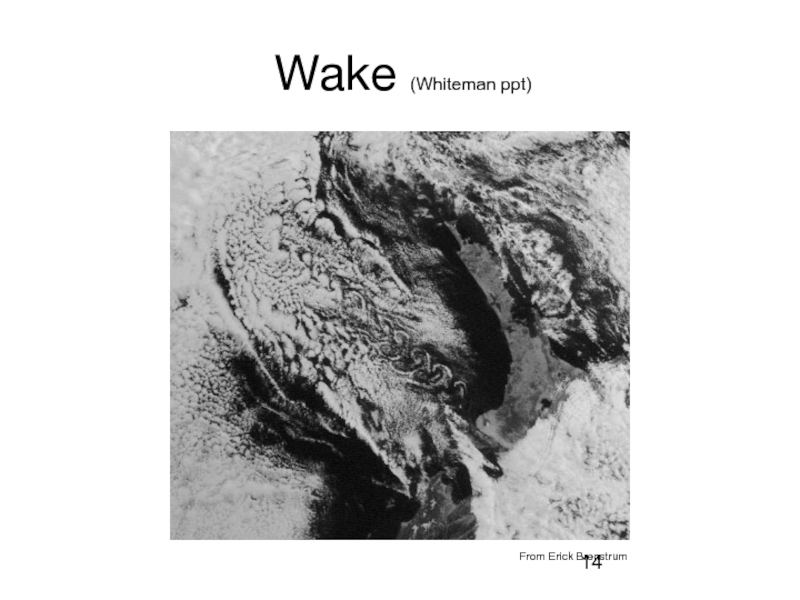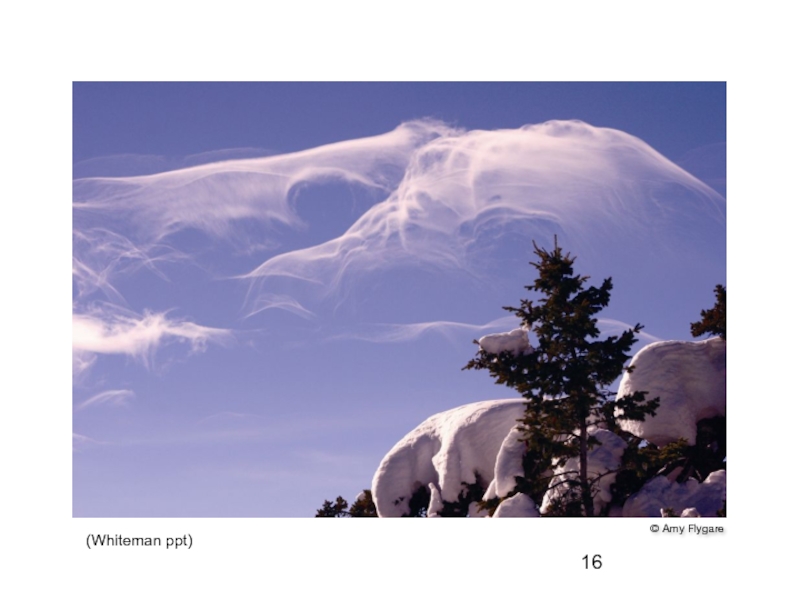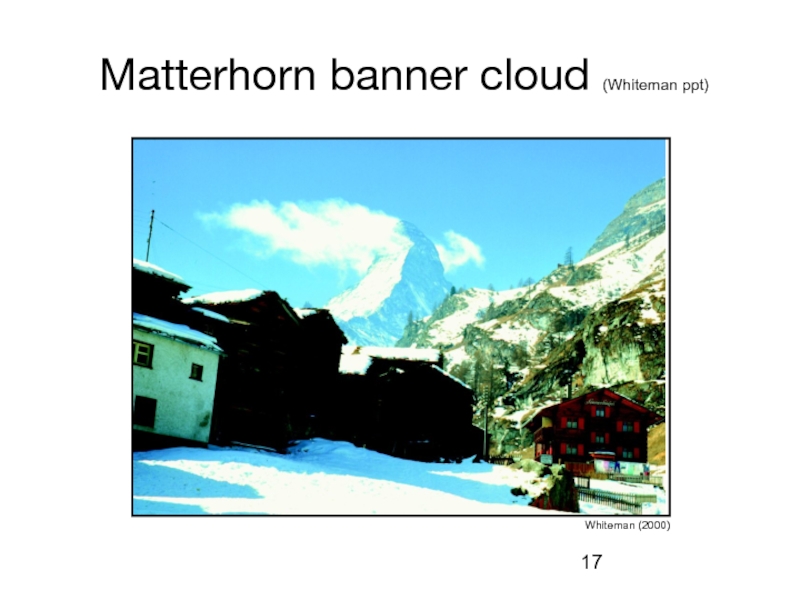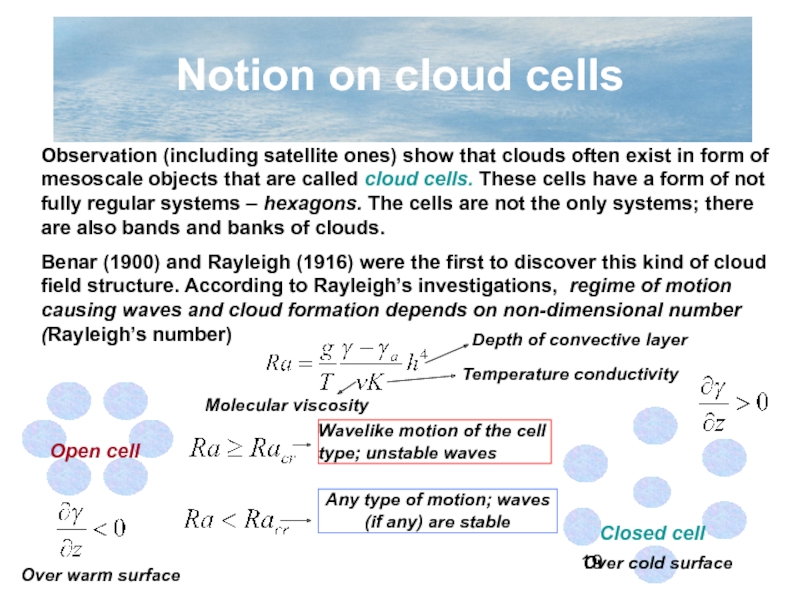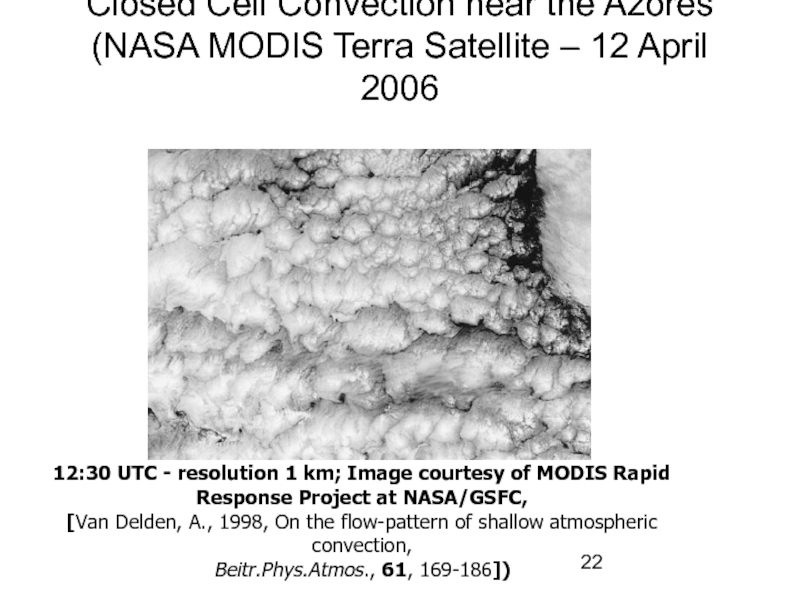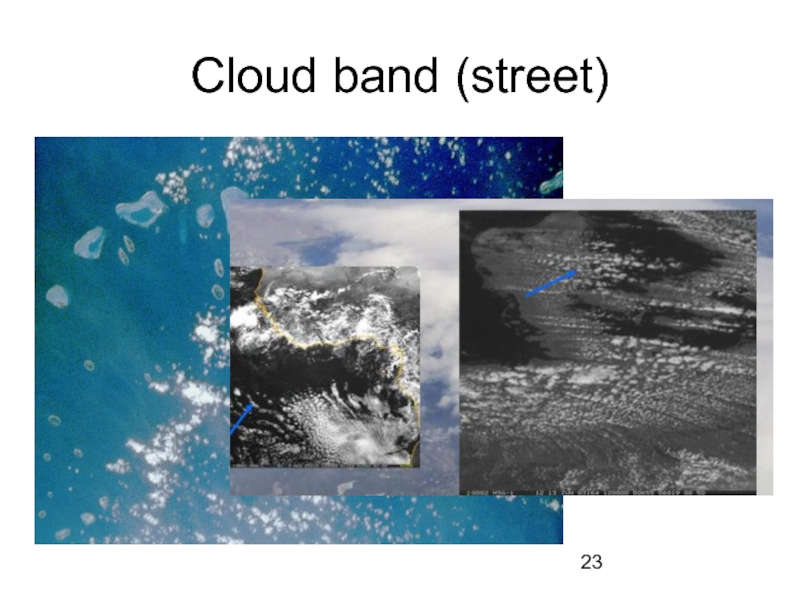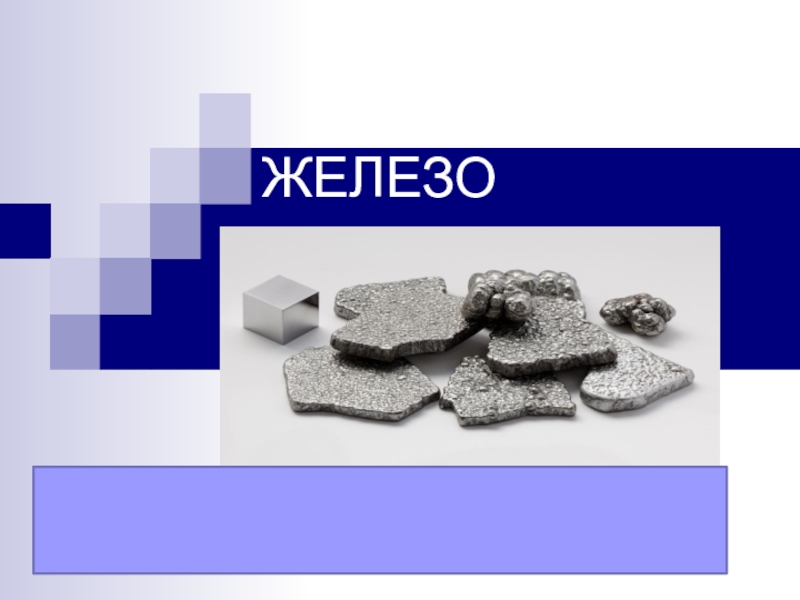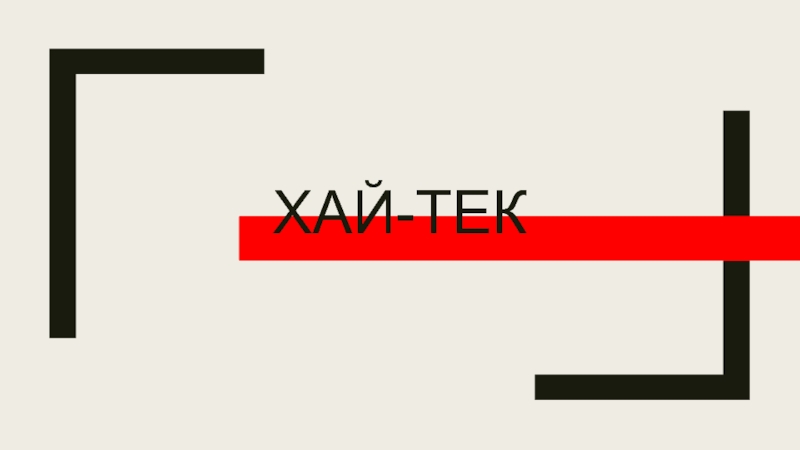Разделы презентаций
- Разное
- Английский язык
- Астрономия
- Алгебра
- Биология
- География
- Геометрия
- Детские презентации
- Информатика
- История
- Литература
- Математика
- Медицина
- Менеджмент
- Музыка
- МХК
- Немецкий язык
- ОБЖ
- Обществознание
- Окружающий мир
- Педагогика
- Русский язык
- Технология
- Физика
- Философия
- Химия
- Шаблоны, картинки для презентаций
- Экология
- Экономика
- Юриспруденция
Undulatiform clouds
Содержание
- 1. Undulatiform clouds
- 2. Undulatiform cloudsWave-like motion in the atmosphere is
- 3. Conditions for undulatiform clouds to arise Wave-like
- 4. The wave can be stable or unstable.
- 5. An example of the critical wavelength determinationIf
- 6. Another reason for wave formation is air
- 7. Terrain-related lifting mechanisms (Whiteman ppt)Whiteman (2000)
- 8. Lee waves (Whiteman ppt)Stull (1995)Lift
- 9. Amplification and cancellation of lee waves (Whiteman ppt)Bérenger & Gerbier (1956)
- 10. © Jeff Grandywww.pbs.org/wgbh/nova/ denali/extremes/speak.htmlLenticular clouds (Whiteman ppt)
- 11. Lenticular and wave clouds (Whiteman ppt)Whiteman (2000)a, b, & g: Brooks Martner photos
- 12. Smith et al. (1997)http://www.wrh.noaa.gov/spokane/pix_month/waves.htmMODIS satelliteLeewave clouds, wakes
- 13. Wakes -турбулентный след (Whiteman ppt)Orgill (1981)
- 14. Wake (Whiteman ppt)From Erick Brenstrum
- 15. © Rick Dunn 1995www.RJDphoto.comKelvin-Helmholz instability(Whiteman ppt)
- 16. © Amy Flygare (Whiteman ppt)
- 17. Matterhorn banner cloud (Whiteman ppt)Whiteman (2000)
- 18. Blocked flow - New Zealand (Whiteman ppt)Whiteman photo
- 19. Notion on cloud cellsObservation (including satellite ones)
- 20. Open cells which resembles a honeycomb
- 21. open- and closed-cell in South AtlanticCredit Jacques
- 22. Closed Cell Convection near the Azores (NASA
- 23. Cloud band (street)
- 24. Скачать презентанцию
Слайды и текст этой презентации
Слайд 1
Oveshoot – проскок
Lee side – подветренная сторона
Lenticular – линзобразный
Wake –
волновой след
Слайд 2Undulatiform clouds
Wave-like motion in the atmosphere is rather often phenomena.
This motion, at certain conditions, are responsible for undulatiform cloud
formation.The undulatiform clouds are seen as long banks, bands, streets, and plates. The sizes of these formations are: 10³-10² km in horizontal directions, and 101-10² meters in vertical, rarely up to 2 km.
Слайд 3Conditions for undulatiform clouds to arise
Wave-like motion
Stable stratification of
the atmosphere
The air involved into the cloud formation should be
humid enough to become saturated at a small ascent.Reasons for the wave-like motion to arise
Two layers ( one above another) with different density and speed of motion.
Inversion (barrier layer) must exist to prevent the layer to mix up.
According to Helmholtz formula, the waves spread with the speed
Слайд 4The wave can be stable or unstable. Stable wave
amplitude does not change its value. Unstable wave amplitude value
increases.The wave stability depends on the wave length at a given conditions, i. e. on the radicand value in the Helmholtz’ formula.
Setting this value to zero, we obtain
Critical wavelength
Value varies from a few meter up to 8 km
The waves are stable. Clouds may appear, but not develop
The waves are unstable. Clouds appear and develop
Слайд 5An example of the critical wavelength determination
If at these conditions
the observed wave , this wave is stable.
If at these
conditions the observed wave , this wave is unstable.Слайд 6
Another reason for wave formation is air flowing over mountains.
These wave arise on the lee side of mountains. That
is why they are known as lee wavesLee wave structure depends on:
Velocity of air currents
Stratification of the atmosphere (unstable stratification results in formation of lee vortexes and chaotic cloudiness appearance)
Size of the mountains.
Слайд 10© Jeff Grandy
www.pbs.org/wgbh/nova/ denali/extremes/speak.html
Lenticular clouds (Whiteman ppt)
Слайд 12Smith et al. (1997)
http://www.wrh.noaa.gov/spokane/pix_month/waves.htm
MODIS satellite
Leewave clouds, wakes (Whiteman ppt)
Wave clouds
over Cascades and Rocky Mtns of MT and Alberta
Wave
clouds induced by South Sandwich Islands on 27 January 2004, MODIS satelliteСлайд 19Notion on cloud cells
Observation (including satellite ones) show that clouds
often exist in form of mesoscale objects that are called
cloud cells. These cells have a form of not fully regular systems – hexagons. The cells are not the only systems; there are also bands and banks of clouds.Benar (1900) and Rayleigh (1916) were the first to discover this kind of cloud field structure. According to Rayleigh’s investigations, regime of motion causing waves and cloud formation depends on non-dimensional number (Rayleigh’s number)
Depth of convective layer
Molecular viscosity
Temperature conductivity
Open cell
Closed cell
Over warm surface
Over cold surface
Wavelike motion of the cell type; unstable waves
Any type of motion; waves (if any) are stable
Слайд 21open- and closed-cell in South Atlantic
Credit Jacques Descloitres, MODIS Rapid
Response Team, NASA/GSFC
http://visibleearth.nasa.gov/view_rec.php?id=6394
In "closed" cells, seen primarily in the top
right corner of the image, warm air is rising in the center, and sinking around the edges, so clouds appear in cell centers, but evaporate around cell edges. Closed and open cell convection represent two stable atmospheric configurations—two sides of the convection coin.
Слайд 22Closed Cell Convection near the Azores (NASA MODIS Terra Satellite
– 12 April 2006
12:30 UTC - resolution 1 km; Image
courtesy of MODIS Rapid Response Project at NASA/GSFC,[Van Delden, A., 1998, On the flow-pattern of shallow atmospheric convection,
Beitr.Phys.Atmos., 61, 169-186])
